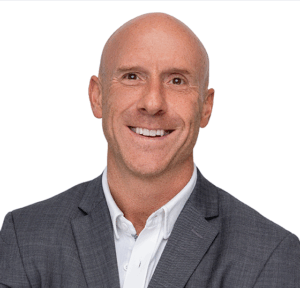While advertisers can find bargain-basement pricing for quality reach on social and programmatic display, it’s a different story for premium video formats such as CTV, according to a report aggregating pricing trends across Omnicom Media Group’s client base.
The report, published by Mark Oster, director of trading operations at Omnicom Media Group, found that programmatic display CPMs are down 40% (below $2) since early March, but premium video CPMs, which include CTV, are down just 5% (roughly $21).
The high cost of premium video during a time when advertisers are pulling back spend has led to a lot of unsold inventory.
Display CPMs have retracted due to supply fluctuation, but premium video CPMs aren’t as affected, since most deals are transacted on a fixed-price basis. For Omnicom, this applies to about 90% of CTV buys and 65% of all premium programmatic video buys.
“Fixed prices completely fail to adapt in a volatile environment,” said Ben Hovaness, managing director of marketplace intelligence and innovation at Omnicom Media Group. “They stop being efficient, market-clearing price levels.”
Not all video sellers have a glut of expensive inventory. Tubi and Pluto TV, for instance, sell through dynamically priced auctions, and are clearing inventory at or near their floor prices. On YouTube, where most inventory is sold in an auction, CPMs for skippable video ads are down 25% on average, to below $10.
As a result, “demand will flow to more efficient inventory sources,” Hovaness said.
That logic comes with the caveat that not all inventory is created equal. Advertisers will pay a premium for a prime placement or key brand alignment.
AdExchanger Daily
Get our editors’ roundup delivered to your inbox every weekday.
Daily Roundup
But enough video inventory is interchangeable that publishers could benefit from variable pricing in a volatile market, especially as more advertisers invest in premium video. OMG’s clients have roughly doubled their share of investment in premium video since March.
“Facebook and Google are auction giants,” Hovaness said. “That’s a pretty elegant demonstration of just how lucrative being on a dynamically priced system can be.”
To find the best prices for clients, OMG is accelerating its supply-path optimization work by getting first-looks at preferred deals, moving to low-floor private marketplaces, and negotiating volume-based, post-auction discounts.
OMG is also encouraging clients to think about their keyword blocking strategies in two camps – “lifestyle” and “disaster” coverage – as to not constrain their supply pools and artificially inflate pricing.
“Coverage of the pandemic is rolled up in everything now, but it’s not necessarily disaster coverage,” Hovaness said. “It’s important for advertisers to take a nuanced approach.”
The social picture
On social, pricing varies based on ad formats and campaign objectives.
Since early March, CPMs are down between 20% to 40% on average across Facebook, Instagram, Snapchat, Pinterest and Twitter, according to a report by Michael Pecci, senior director at OMG subsidiary OMD.
CPMs on Facebook’s news feed and Stories, which make up 90% of OMG client investment, have dipped between 25% and 30%, to about $4 and $2, respectively. Meanwhile, in-stream video CPMs dipped 60% to below $10 as more people watch video on Facebook.
Facebook prices varied based on campaign objectives. Reach-based campaign CPMs have dropped 10% to 15%, to between $1.75 and $3.50. But direct-response campaign CPMs are down 45% to 50%, to between $4 and $6, as advertisers pull back spend. Engagement CPMs, which drive video views and likes, are down 40% to just below $6.
“Certain categories that used to spend a lot on direct response, like travel and hospitality, have pulled back in this environment,” Hovaness said.
On Twitter, promoted videos, which account for 90% of OMG client investment on the platform, CPMs have dipped 30% as supply increases and demand shrinks. In-stream video CPMs have also dropped consistently since early March to as low as $7.55, due to similar changes in supply and demand.
Twitter is making up for some of the decline in live sports-related content, a major source of supply for in-stream video, through sponsorships around virtual events and clips from past games.
On Snapchat, augmented reality lenses and filter CPMs are stable, as they’re often tied to static content from publishers in the Discover feed. Meanwhile, Snap Ads – vertical in-stream videos – are down by 25% to below $2, as supply increases and demand shrinks.
And on Pinterest, display and video CPMs have converged at just below $3.50 after dropping by 15% and 40%, respectively. Pinterest is the only social platform that implements pricing floors for video, which could be keeping prices high and, in turn, discouraging demand.
OMG is advising clients that can spend to take advantage of broad CPM deflation on social by keeping spend at current levels or pulling budget forward from later in the year.
“There’s a lot of high-quality inventory on social right now being sold at bargain prices,” Hovaness said. “If you have the resources, it makes sense to get in at lower levels.”
CORRECTION: The original Omnicom report incorrectly stated Twitter’s in-stream video CPMs have risen. This article is updated to reflect that they have decreased.















